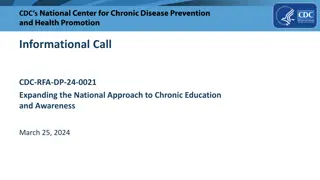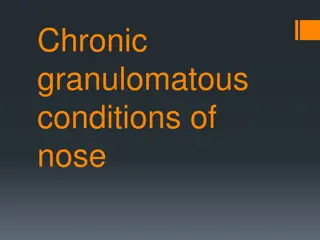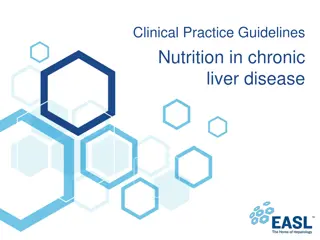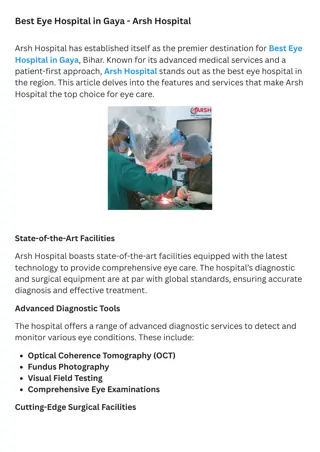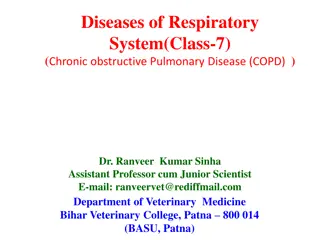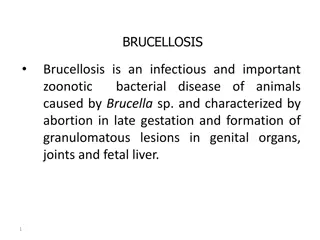
Chronic Granulomatous Disease at Sohag University Hospital: Case Series by Eman Mohamed Fahmy
Explore a case series on Chronic Granulomatous Disease (CGD) at Sohag University Hospital, detailing incidence, genetic causes, clinical features, and management strategies. Gain insights to enhance pediatric physicians' awareness for early diagnosis and treatment.
Download Presentation

Please find below an Image/Link to download the presentation.
The content on the website is provided AS IS for your information and personal use only. It may not be sold, licensed, or shared on other websites without obtaining consent from the author. If you encounter any issues during the download, it is possible that the publisher has removed the file from their server.
You are allowed to download the files provided on this website for personal or commercial use, subject to the condition that they are used lawfully. All files are the property of their respective owners.
The content on the website is provided AS IS for your information and personal use only. It may not be sold, licensed, or shared on other websites without obtaining consent from the author.
E N D
Presentation Transcript
Chronic granulomatous disease in Sohag university hospital: Case series Eman Mohamed Fahmy
Introduction: Chronic granulomatous disease (CGD) is a rare inherited immunodeficiency disorder with an incidence of 4-5 per 1 million individuals. It is caused by mutation in 5 genes, CYBA, CYBB, NCF1, NCF2, or NCF4 genes, CYBB inherited as X-linked while other 4 genes inherited as autosomal recessive. CGD is characterized by neutrophils and monocytes capable of normal chemotaxis, ingestion and degranulation, but unable to kill catalase-positive microorganisms due to defects in one of the 5 major subunits of NADPH oxidase
Method: The medical records of patients diagnosed with CGD within 1 year from August 2017 to July 2018 were reviewed and analyzed with respect to demographic data, age at presentation and diagnosis, clinical features, laboratory investigations, organisms isolated and treatment & prophylaxis given. Aim: Increase awareness of pediatric physicians in sohag government about CGD for early diagnosis and early management. Results: 15 patients were diagnosed with CGD in the period of the study with failure to thrive and lymphadenopathy were the common presentation of them.
Introduction Chronic Granulomatous Disease (CGD) was described for the first time by both B.H. Landing and R.A. Good in 1957 (1). CGD comprises a rare group of genetically determined changes affecting the immune system characterized by the inability of the body s phagocytic cells (neutrophil and monocyte granulocytes) to kill certain phagocytosed microorganisms (2). This phagocytic cell defect is caused by mutations in the gene coding for the NADPH oxidase enzyme essential for the
microbicide activity of phagocytic cells (2). The disease affects an average of one in every 250,000 live births. Affected children are subject to frequent severe bacterial and fungal infections with the granulomatous hallmark of inflammatory lesions in histological specimens from which the name CGD derives (3). Patients with CGD usually present in infancy or childhood with repeated, severe bacterial and/or fungal infections. However, delayed diagnosis in adulthood is also possible (4). The most common manifestations include infection
granulomatous disease, inflammation, and failure to thrive (nutritional effects of chronic infection and inflammation). The disease is heterogeneous in its manifestations, related to the subtypes, and severity of the associated macrophage defect (5). In the majority of patients, the production of superoxides is undetetectable and the manifestations are therefore early and predictable to a great extent. In others, low level respiratory burst activity may delay manifestations or diagnosis into early adulthood (6).
Most patients present with infectious illness, which include sino pulmonary disease, abscesses, or lymphadenitis. A provisional diagnosis of CGD is made by a DHR assay using flow cytometry or by nitroblue tetrazolium (NBT) using light microscopy (7). Other manifestations are related more to inflammatory consequences and/or structural disease and resultant organ dysfunction (8). As there is a paucity of data on CGD from developing countries, we aim to study the clinical profile, microbiological spectrum in children diagnosed with CGD in a tertiary care hospital in sohag government over a span of 1 year.
Results Our study had 9 males and 6 females with 11 (73.3%) having history of consanguinity. Their mean age at presentation and diagnosis was 2.25 years and 3.89 years respectively. Failure to thrive was present in 9 cases (60%), lymphadenopathy in 9 cases (60 %) followed by hepatomegaly6 cases (40 %) and splenomegaly in 4 cases (26.6 %). Multiple infections were present in the same patient with the commonest infection was abscesses 11 cases (73.3%) involving lungs, liver, subcutaneous tissue and brain followed by pneumonia 8 cases (53.3 %) followed by lymphadenitis in 7 cases (46.6 %) , and osteomyelitis 6 cases (40 %). Organisms isolated from blood, stool and pus of infected lesions included bacteria- Staphylococci 6 cases (40 %), Mycobacterium tuberculosis 3 cases (20 %), Klebsiella 1 case (6.6%) and atypical mycobacterium 1 case ( 6.6 %) and fungi- Aspergillus 3 cases (20 %), Candida 1 (6.6 %) . Diagnosis was based on reduced nitroblue tetrazolium test (NBT) between 0-5 % in all patients and confirmed by dihydrorhodamine (DHR) assay in 100 % patients. Complete blood count in all patients showed leucocytosis with marked neutrophilia. Also we excluded other common types of primary immune deficiency in all our cases by normal immunoglobulin levels and normal CD markers for T and B lymphocytes. All patients received the needed treatment of the current infection but no one receive gamma interferon as it not available in Egypt, 3 cases are under preparation for
BM transplantation and all received antifungal and antibacterial prophylaxis. 4 patients are lost to follow-up. Genetic mutation analysis has been done in the 3 patients prepared for BMT. Conclusion CGD is one of the primary immune deficiency disorders caused by defect in phagocytic function common present in Upper Egypt due to high consangeous rate. The commonest mode of presentation was skin and subcutaneous abscesses,
Pneumonia, lymphadenitis and osteomyelitis. Staphylococcus Aureus, MycobacteriaTB , Klebsiella, Atypical mycobacterium were the commonest bacterias with Aspergillus and candida were the commonest isolated fungi in our series. All cases showed leucocytosis and positive NBT test and DHR test. All children with CGD should be given routine chemoprophylaxis with trimethoprim-sulfmethoxazole and Itraconazole. Families should be screened and counseled during future conceptions.
Landing B.H et al, A syndrome of recurrent infection and infiltration of viscera by pigmented lipid histiocytes. Pediatrics 20:431-438, 1957. Leusen J.H.W. et al. A point mutation in gp91-phox of cytochrome b558 of the human NADPH oxidase leading to defective translocation of the cytosolic proteins p47-phox and p67-phox. J Clin Invest 93: 2120-2126, 1994. Towbin AJ, Chaves I. Chronic granulomatous disease. Pediatr Radiol. 2010;40 (5):657-68. Curnutte JT: Chronic granulomatous disease: the solving of a clinical riddle at the molecular level. Clin Immunol Immunopathol 1993, 67:S2-15. Al-Khuwaitir TS, et al: Chronic granulomatous disease with recurrent hepatic abscesses in an adult. Saudi Med J 2007, 28:1593-1596 Winkelstein JA, et al: Chronic granulomatous disease. Report on a national registry of 368 patients. Medicine (Baltimore) 2000, 79:155-169. Elloumi HZ, Holland SM. Diagnostic assays for chronic granulomatous disease and other neutrophil disorders. Methods Mol Biol. 2007;412:505-23. Mouy R. et al. Incidence, severity and prevention of infections in Chronic Granulomatous Disease. J Pediatr 114: 555-560, 1989



